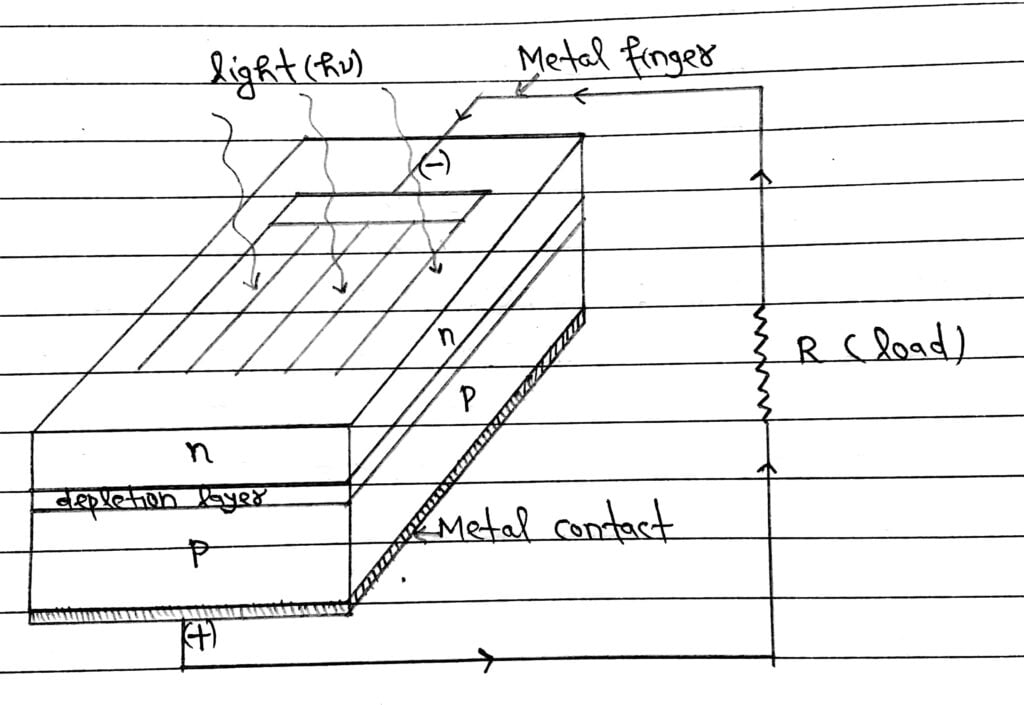Solar cell is a PN junction diode, which converts Solar energy into electrical energy.
Its symbol is-

Construction
It consist of silicons or Gallium-Arsenide PN junction diode packed in a glass window on the top.

The n-region has small thickness and p-region has large thickness.
n-region made thin, So that light falling on the solar cell is reached to the depletion layer easily. On the top of the n-side layer metallic finger are deposited and they are made to have enough space between them for the light reach the depletion region through n-layer.
Working Of Solar Cell
When Photons of light (hv > Eg) falls at the junction, electron-hole pairs are generated near the junction and they move in opposite directions due to junction field. They will be collected at the two sides of the junction, giving rise to a photo voltage between the top and bottom electrodes. When an external load is connected across metal electrodes, a photo current flows.
I-V characteristics Of Solar Cell
The V-I characteristics of solar cell is shown that which is lying in 4th quadrant of the co-ordinate axis, because of direction of current. In graph point X represent open circuit voltage and point Y represents short circuit voltage.

Uses Of Solar Cell
(I) Solar panel, charging storage batteries.
(II) Artificial satellite.
(III) In calculators and wrist watches.
Also Read: CBSE Class 12 Physics Chapter-14 (Semiconductor and Electronic Devices) All Topics
